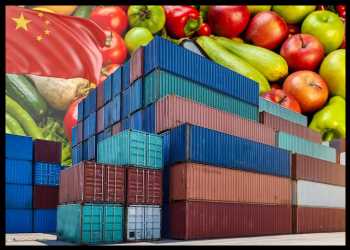China Inflation Data Raises Risk Of Deflation; Exports Fall
Reinstating the risk of deflation, China’s consumer prices remained flat in September and producer prices continued to decline, official data revealed on Friday.
Foreign trade data from the General Administration of Customs showed that exports declined again in September amid falling prices and subdued global demand.
The consumer price index, or CPI, remained unchanged on a yearly basis after a 0.1 percent gain in August, the National Bureau of Statistics reported. Prices were forecast to climb 0.2 percent.
Prices rose only 0.1 percent, while Beijing aims to keep inflation around 3 percent for the whole year.
Core inflation excluding food and energy held steady at 0.8 percent in September.
Driven by the 22 percent plunge in pork prices, food prices were down 3.2 percent annually. At the same time, services prices increased 1.3 percent.
China’s low inflation rate is not primarily due to domestic weakness but it appears to be related to excess capacity in industry as the pandemic boom in global goods demand has reversed, economists at Capital Economics said.
Producer prices posted an annual fall of 2.5 percent in September but slower than the 3.0 percent decrease in August, official data showed. Economists had forecast prices to decline 2.4 percent. This was the twelfth consecutive fall in prices.
Capital economics’ economists said headline PPI inflation is likely to remain negative for the rest of the year, while factory-gate deflation will become less severe.
Exports registered an annual decline of 6.2 percent in September. This was slower than the expected drop of 7.6 percent and the 8.8 percent fall seen in August.
Imports also decreased 6.2 percent annually, slower than the 7.3 percent fall in August. Imports were forecast to drop 6.0 percent.
Consequently, the trade surplus rose to $77.7 billion from $68.4 billion in August. The expected level was $70.0 billion.
Economists at Capital Economics observed that the decline in exports largely reflect the fall in export prices rather than export volumes. Economists anticipate a pullback in export volumes before long.
Imports are forecast to pick up again over the coming months due to higher commodity demand, underpinned by a step up in infrastructure spending, they noted.
Elsewhere, the People’s Bank of China reported that banks extended CNY 2.31 trillion of new yuan loans in September. Lending grew from CNY 1.36 trillion in August, but was below economists’ forecast of CNY 2.5 trillion.
A sharp rebound in credit growth seems unlikely but it could pick up somewhat over the coming quarters, especially if policy support succeeds in driving a cyclical rebound in home sales, Capital Economics’ economist Julian Evans-Pritchard noted.
Source: Read Full Article

